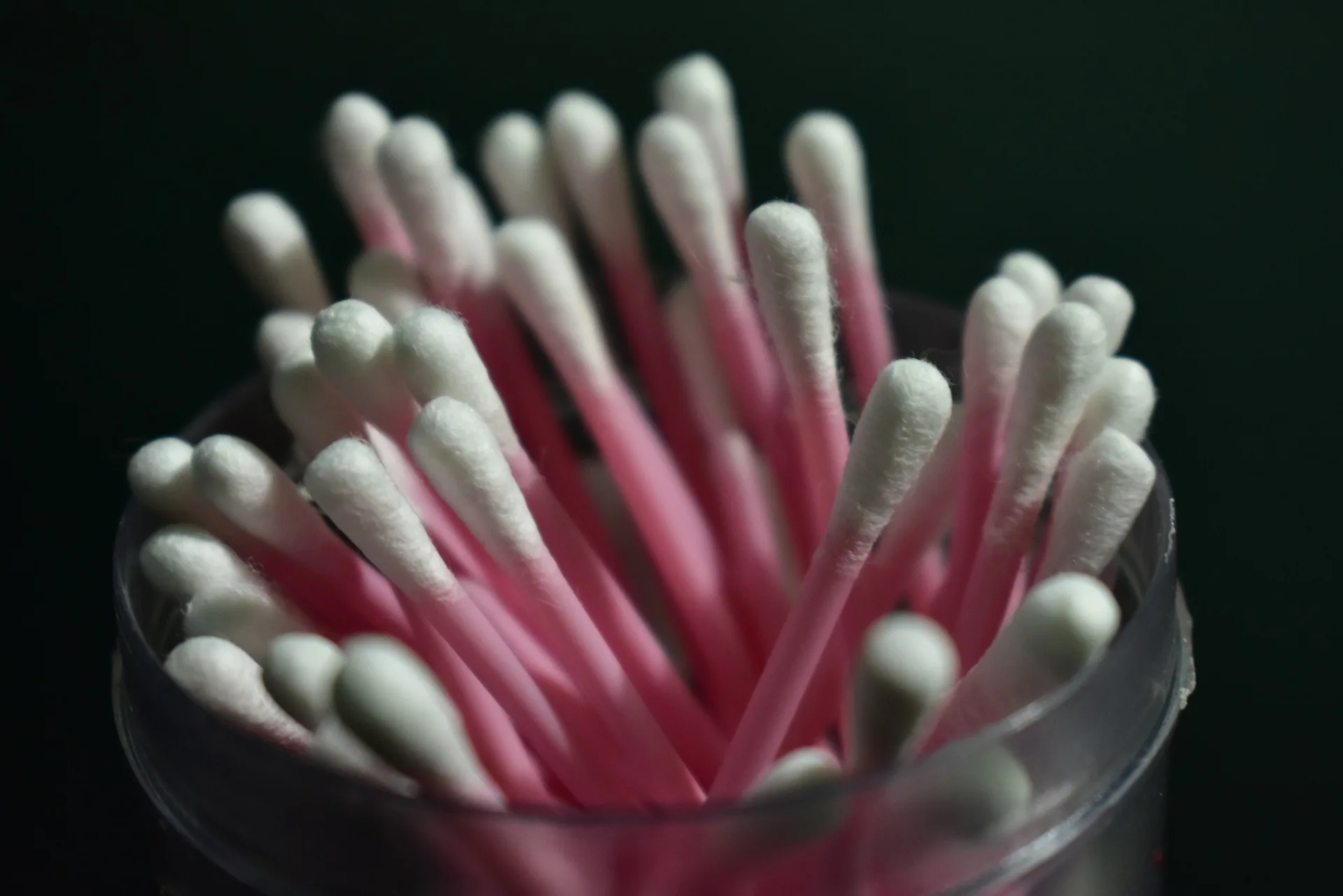Cotton swabs are specially designed to clean the ear canal. However, on the Internet you can find a recommendation to avoid this method of cleaning. We decided to check whether there is a scientific explanation for such advice.
The role of cotton swabs in ear hygiene is written about in the media and blogs. For example, in 2021 "News” published an article “An otolaryngologist spoke about proper cleaning of ears with cotton swabs,” and the TV channel “Star" - "The doctor explained why ears cannot be cleaned with cotton swabs." Users ask questions specialists, is it possible clean ears in this way to children, and Also are interested alternative ways hygiene.
Cotton buds appeared on the market in 1923 under the name Baby Gays. They were invented by American Leo Gerstensag after seeing his wife wrap small pieces of cotton wool around a toothpick every day to clean their little daughter's ears. Its design had cotton wool only at one end, and the packaging was designed in such a way that the parent could reach the wand with one hand while holding the baby with the other. His new product quickly conquered the market and became popular not only as a baby hygiene item, but also an integral part of almost any bathroom. However, is there a real need for ear cleaning and what is the best way to carry out the procedure?
First you need to understand what the ears are from a physiological point of view. The ear is complex organ, designed to capture sound vibrations. Anatomically ear subdivided into external, middle and internal. The outer ear consists of a section of the temporal bone, the auricle and the auditory canal, which is separated from the structures of the middle ear by the eardrum. The inside of the ear canal is lined with skin, the top layer of which is called the epidermis. The epidermis, both in the ear canal and in other parts of the body, is constantly renewed throughout life - some cells die off, and others replace them. In other parts of the body, dead epidermal cells simply fall off by themselves, slough off on clothing, during washing, or when using cosmetic scrubs and peels. Inside the ear canal, such cells would risk accumulating, but nature provided An interesting way to get rid of them. To achieve this, the sweat glands in the epidermis have evolved into sulfur glands. They produce a special substance - earwax, consisting of proteins, fats and fatty acids, as well as mineral salts. Sulfur, like chewing gum, sticks to the walls of the ear canal and comes off along with the dead epithelium. It also collects sebum and dust that gets into the ear canal. During chewing movements, as well as when the jaw moves during speech, sulfur gradually moves from the depths of the ear canal closer to the auricle, and then, when water enters the ear during hygiene procedures, it is washed out along with it.
Function earwax is not only cleaning the ear canal, but also moisturizing it, as well as protecting it, since the acidity level of sulfur counteracts the development of bacterial and fungal flora. Normal glands per month produce 12 to 20 mg of sulfur, all of which is naturally removed from the ear. American Academy of Otolaryngology Foundation for Head and Neck Surgery advises do not clean the ear canal at all, but literally “leave the wax alone” if there is no ear congestion and a feeling of hearing loss. Harvard Medical School adheres to of the same opinion: the ear canal cleanses itself, and it is enough just to remove the wax that has already left it and is located on the auricle. Doctors from the Clinic give the same recommendations Cleveland and Clinics Mayo, reputable non-profit medical research centers in the USA. Russian doctors also agree with their position, for example employees Department of Otolaryngology and Ear Microsurgery, Moscow City Clinical Hospital No. 52. They also explain why ear cleaning is such a popular procedure: “The inside of human ears is covered with a large number of nerve endings, after exposure to cotton swabs they become even more irritated, forcing you to soon take the wand again and “make yourself feel good” again. Another important factor is considered social: many people think that earwax is just dirt, and the ears must be cleaned daily as deeply and thoroughly as possible. Meanwhile, sulfur is as much protection for the ear as tears are for the eyes.”
In addition to the fact that the ears have an excellent ability to clean themselves, and therefore there is no need to clean them, such “hygiene” can even be harmful. First, cotton swabs contribute compressing wax and moving it deeper into the ear canal, which can bring to the formation of sulfur plugs. Secondly, this cleaning method can be traumatic, especially for children and adolescents. American pediatricians calculatedthat between 1990 and 2010, 263,338 children under 18 years of age presented to emergency departments with various ear injuries due to the use of cotton swabs. Doctors diagnosed a quarter of them with a ruptured eardrum.
However, some people still need additional ear hygiene - first of all, these are people with too narrow ear canals. However conduct deeper cleaning of the ears is necessary only after consultation with an ENT doctor, who will select the appropriate method (for example, perhaps will offer rinse the ear canal with hydrogen peroxide) and explain how to do it correctly.
Thus, human ears clean well on their own: sulfur collects dead epidermal cells, sebum and dust, and then, during jaw movements, moves towards the exit of the ear canal. From there it is safe to remove it with a towel after washing your hair. Doctors do not consider any other methods of ear cleaning necessary or safe. Cleaning the ear canal with cotton swabs is not only unnecessary, but can also cause injury.
Cover image: Image by Latupeirissa from Pixabay
If you find a spelling or grammatical error, please let us know by highlighting the error text and clicking Ctrl+Enter.






